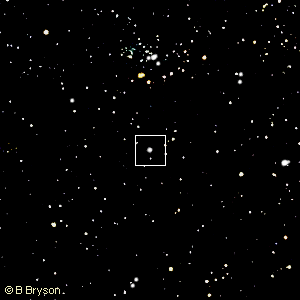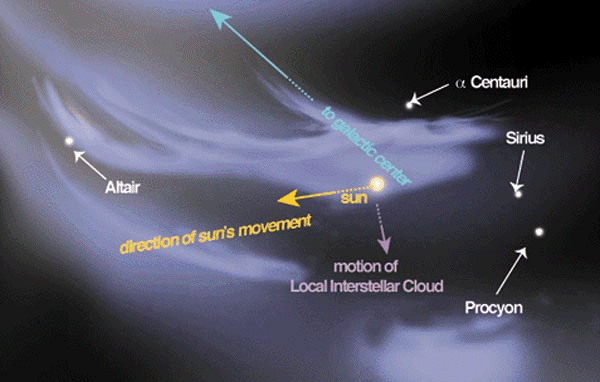More at 100 petametersThe drawing below -- from Priscilla Frisch -- depicts the latest information about the Sun's neighborhood. Details can be found in Dr. Frisch's article published in the American Scientist, The Galactic Environment of the Sun.
This drawing depicts a volume of space about two to three times the size of my images. Note the direction to the center of the galaxy. The arrow points in the direction of the constellation Sagittarius. The sequence of images I have developed are based on the Earth being positioned between the Sun and Sagittarius. This happens during July and August of each year. Much work has been done to establish the local environment of the Sun. Based upon careful observation of stellar parallax (the apparent motion of a nearby star relative to background stars caused by the orbit of the Earth around the Sun), 11 stars have been located within 10 light years of Earth. These nearby stars are:
That's it. Eleven stars within a volume of 1000 cubic light years. The star that is most like our Sun in size, temperature, and color is Alpha Centauri, one of a group of three stars gravitationally bound together. The closest lone star that is similar to the Sun is tau Ceti, nearly 15 light years away. |

